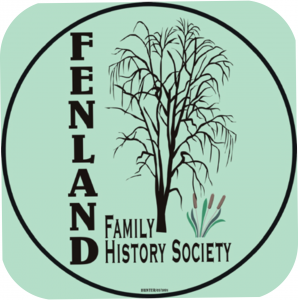CENSUS 1921 – 2021
It’s a Census Year! By law (Census Act 1920), every household should have filled in the 2021 census with details of who was living or staying in the household on 21 March 2021.
Although family historians love the census (if not the transcribers, sometimes spellings of personal and place names leave a lot to be desired – but we family historians have learned to take that into account); the reason for this decennial (every 10 years) survey is to help decide how to fund and manage public services. The object of the census was to gain information about the population as a whole. Luckily, it was decided that, by listing individuals wherever they happened to be on a single night, was the most efficient way to count everybody once, and nobody twice – although, I’m sure if you ask, you will find family historians who have found a few of their kith and kin listed twice, especially those st(r)aying away from home on the night in question!
The first census in the UK was taken in 1801. However, the first were just numeric data and it wasn’t until 1841 that the information collected began to look similar to that we filled in recently. If you come along to one of our family history sessions, or open days (as soon as we are able to hold them within Covid restrictions), you are sure to be shown the 1841-1911 censuses to track down individuals and find details of families. We are also aware of the problems with spellings and other errors and can guide you through your searches.
As a family history society, we are eagerly awaiting the 1921 census. This is due out in 2022 as, again by law, the information collected cannot be made public for 100 years. It will be made available online via Find My Past; the index will be free to search, but, the images will cost per view.
The 1921 is a significant census as the 1931 was lost during the Blitz and there was no 1941 taken due to the War. A National Register was compiled in 1939 that listed the personal details of every civilian (i.e. non-military personnel) in Great Britain and Northern Ireland. It was used to coordinate the home-front war effort in issuing identity cards, organising rationing etc.
The censuses and Register all form part of the sources used when we help with your family tree research; finding names, relationships, where people are from, where they live, what they did for a living etc.
The census is also a wonderful snapshot of days gone by in occupations.
Here are some jobs from the 1921 census:
Hayward of the manor – looks after hedges and fences
Penstock keeper – maintains drainage sluices
Fat lad – greases wagon wheels
Muffin maker (otherwise a jiggerer) – makes small plates (crockery)
Cosaque maker – maker of Christmas Crackers
Cattle floater – drove a low horse-drawn wagon used for transporting cattle
Pole shifter – moved the pole on electric trams from one overhead wire to another
Dandy rover – part of the silk thread process
I wonder if our App Developer, Coffee Barista, Life Coach, Web Designer, Biodiversity & Climate Policy Advisor, Cyber Security Defence Analyst, and Digital Fundraising Officer titles will seem as odd in 100 years’ time?
We aim to restart our monthly meetings this Summer when circumstances allow and restrictions have been eased. Hopefully, our AGM will take place as usual in September in Wisbech Library, with a special meeting as it will be our 20th anniversary with a lot of interaction for our members – watch this space for details. Non-members are welcome to attend our meetings.
RESEARCH SESSIONS These will restart as soon as we are able to attend the venues. In the meantime our researchers are working hard on all the queries we receive from those who contact us.
For further information on any of the above please call Bridget 01945 57723
